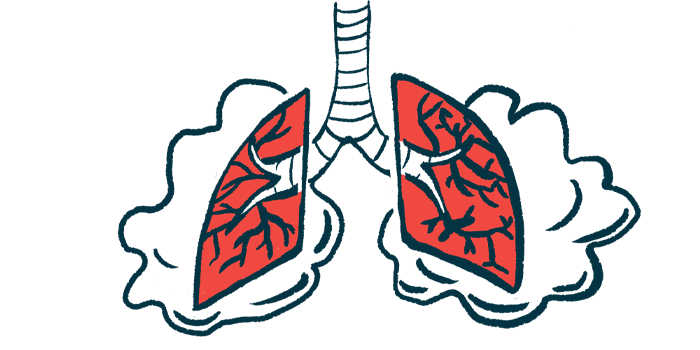Man’s cancer complicated by LEMS and another syndrome, SIADH
Two syndromes known to associate with cancer, but it's rare to find both

The rare case of a man with lung cancer complicated by two co-occurring cancer-associated syndromes — Lambert-Eaton myasthenic syndrome (LEMS) and syndrome of inappropriate antidiuretic hormone secretion (SIADH) — was described in a recent report.
According to its scientists, only four other documented reports of LEMS and SIADH developing simultaneously in the same cancer patient are known.
The article, “A rare case of concomitant Lambert–Eaton myasthenic syndrome and syndrome of inappropriate antidiuretic hormone secretion in a patient with small cell lung carcinoma,” was published in the journal Respiratory Medicine Case Reports.
About half of LEMS cases tied to underlying cancer, most often SCLC
An autoimmune disorder, LEMS is caused by antibodies that target proteins called voltage-gated calcium channels (VGCCs) on nerve cells. This attack interferes with the normal communication between nerve and muscle cells, ultimately leading to disease symptoms of muscle weakness and fatigue.
About half of LEMS cases are associated with an underlying cancer, most commonly small-cell lung cancer (SCLC). LEMS is thought to occur in these cases because cancer cells also contain VGCCs, and as the immune system targets these cancer-related proteins for attack, it also attacks healthy nerve cells.
SIADH is another disorder that can occur as a paraneoplastic syndrome — a disorder that develops as a complication of an underlying cancer. In SIADH, the body produces large amounts of a hormone that normally helps regulate how much fluid and salt is released into urine by the kidneys. As a consequence, people with SIADH characteristically have low sodium levels in the bloodstream, or hyponatremia.
Scientists in Japan described the case of a 66-year-old man whose SCLC was complicated by both of these conditions.
“Paraneoplastic syndromes, highly associated with SCLC, are clinical entities associated with cancers and often overlap with endocrine [hormone-related] and neurological problems,” they wrote.
The man, who had been a smoker for more than four decades, sought medical attention due to complaints of fatigue and muscle weakness that had caused him difficulty walking. The man had twice before had stomach cancer, which had been surgically removed.
Imaging of the man’s chest revealed cancer in his lung, which had spread within the lung and into his lymph nodes. Laboratory tests showed abnormally low sodium levels and positivity for antibodies against VGCCs, among other findings.
Ultimately, these findings led to the diagnosis of SCLC complicated by both LEMS and SIADH.
LEMS and SIADH eased with chemotherapy, but cancer was deadly
He was started on a chemotherapy regimen that included irinotecan and cisplatin. About three weeks into this regimen, imaging of his chest showed that his tumor had diminished in size by 67%. At the same time, his muscle weakness eased, to the point that after chemotherapy he was able to walk with a cane. His sodium levels also rose following chemotherapy.
These data highlight that treating the underlying tumor can help ease the symptoms of paraneoplastic syndromes like LEMS and SIADH, according to the scientists.
“Although it is difficult to completely eradicate all of the paraneoplastic syndrome-associated symptoms, the extent of the conditions is generally improved with successful treatment of the primary tumor,” the team wrote.
Although his initial response to chemotherapy was positive, the man’s cancer began to progress again after the second cycle of treatment. He ultimately died six months after being diagnosed with small-cell lung cancer.







